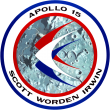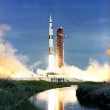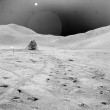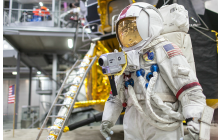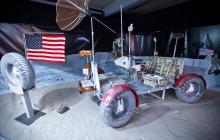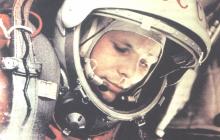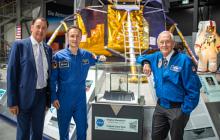July 31st, 1971. Setting: The more than 4,000-metre-high Apennine Mountains on the eastern edge of the Imbrium Basin on the Moon. Astronaut David Scott, Apollo 15 commander, steers the “Lunar Roving Vehicle” – also called “Moon rover” – across the moonscape to the edge of the Hadley Rille, a gigantic volcanic vent created by lava flows about 3 billion years ago...
Apollo 15 was the fourth Moon landing and at the same time the first of the three J-type Apollo missions with the primary focus on scientific research.
Already in March 1970, the crew for the mission was announced. David Scott, who had already completed two successful spaceflights with Gemini 8 and Apollo 9, was appointed to be its commander. Alfred Worden became the pilot of the command module “Endeavour”, and James Irwin the pilot of the lunar module “Falcon”. All three astronauts were members of the US Air Force. Given the J mission’s broader scientific purpose, the astronauts had a more comprehensive training in terms of geology, and already practised on a moon-like terrain on Earth in order to be able to fulfil their activities on the Earth’s satellite. The “Falcon” was an improved version of its predecessors, weighing about one ton. In combination with the optimised life support systems in the space suits, it allowed the astronauts to spend three instead of two days on the lunar surface. Moreover, the service module was equipped with high-quality scientific cameras and devices.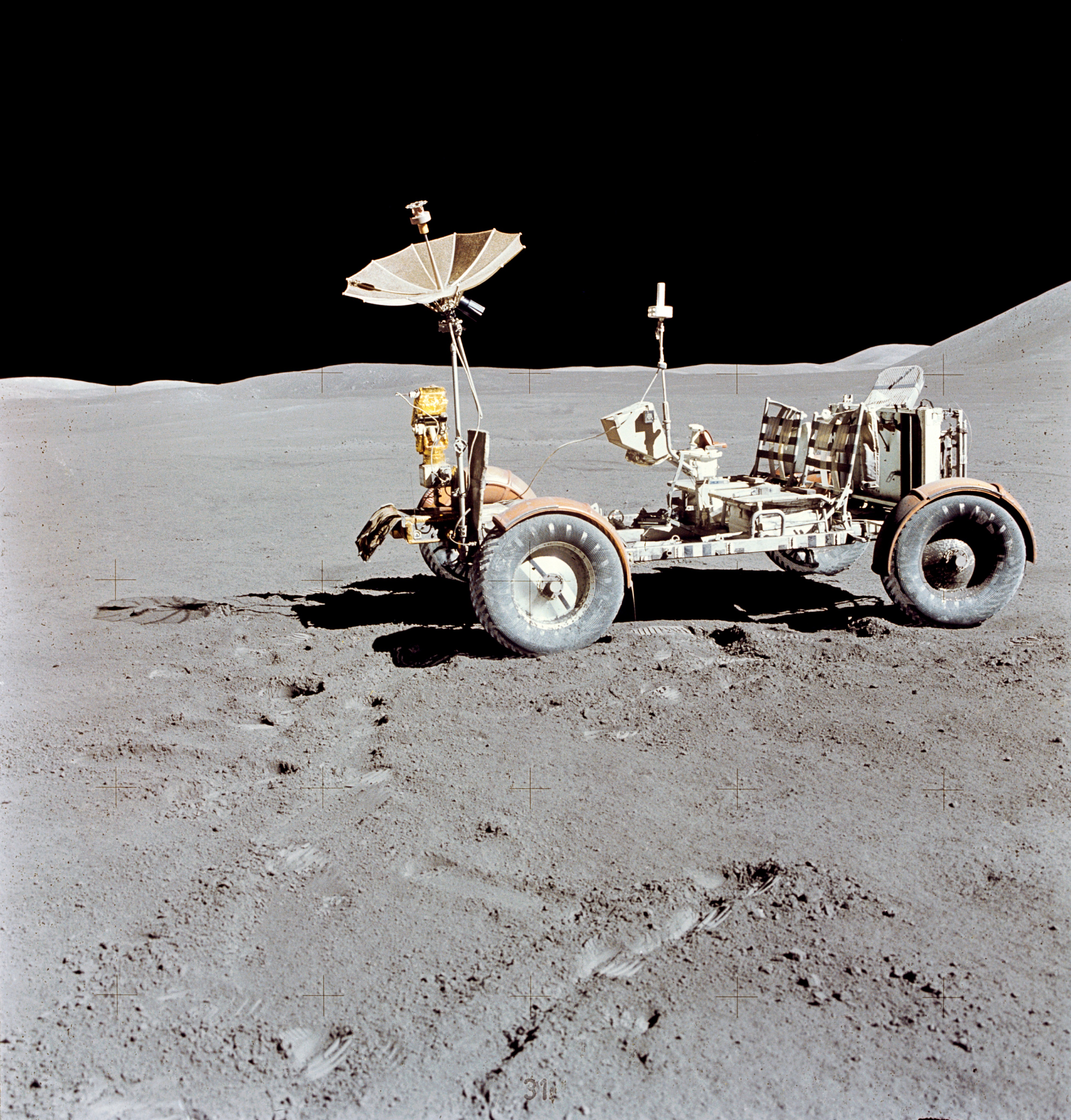
“Moon rover” provides mobility on the moon
Another innovative feature: The folded “Moon rover” was located at the Quad-1 Bay of the “Falcon”. The battery-driven “Lunar Roving Vehicle” was a lightweight vehicle specifically developed for this purpose, weighing 210 kg on Earth. Each of its wheels, made of braided piano wire, was equipped with its own engine providing a performance of 2.5 hp. For the astronauts this meant a considerable increase of mobility on the lunar surface: They gained a 10-kilometre radius of action around the lunar module “Falcon”.
Landing in the mountains
On July 30th, four days after the launch at Kennedy Space Center, the moment had come: Apollo 15 was orbiting the Moon, and David Scott and James Irwin undocked the lunar module from the spaceship. The ambitious landing site of the “Falcon”: An area in the almost 4,000-metre-high Apennine Mountains near the Hadley Rille, a gigantic canyon that was most likely created by lava flows about 3 billion years ago. It is about 116 kilometres long, 1 kilometre wide and 400 metres deep, and is located at the eastern edge of the Mare Imbrium (Latin for “Sea of Rains”). At a rate of descent of 2 metres per second and a manual directional correction by the commander, the lunar module landed on the Moon’s surface at 23:16:29 CET. After a bit more than two hours, the first and only “Stand-up EVA” of the six moon landings took place: David Scott, wearing his spacesuit, stuck his head out of the docking hatch and took the first pictures of the landing site with a 500-mm telephoto lens. In a moving report, he described his view to his colleagues in Houston.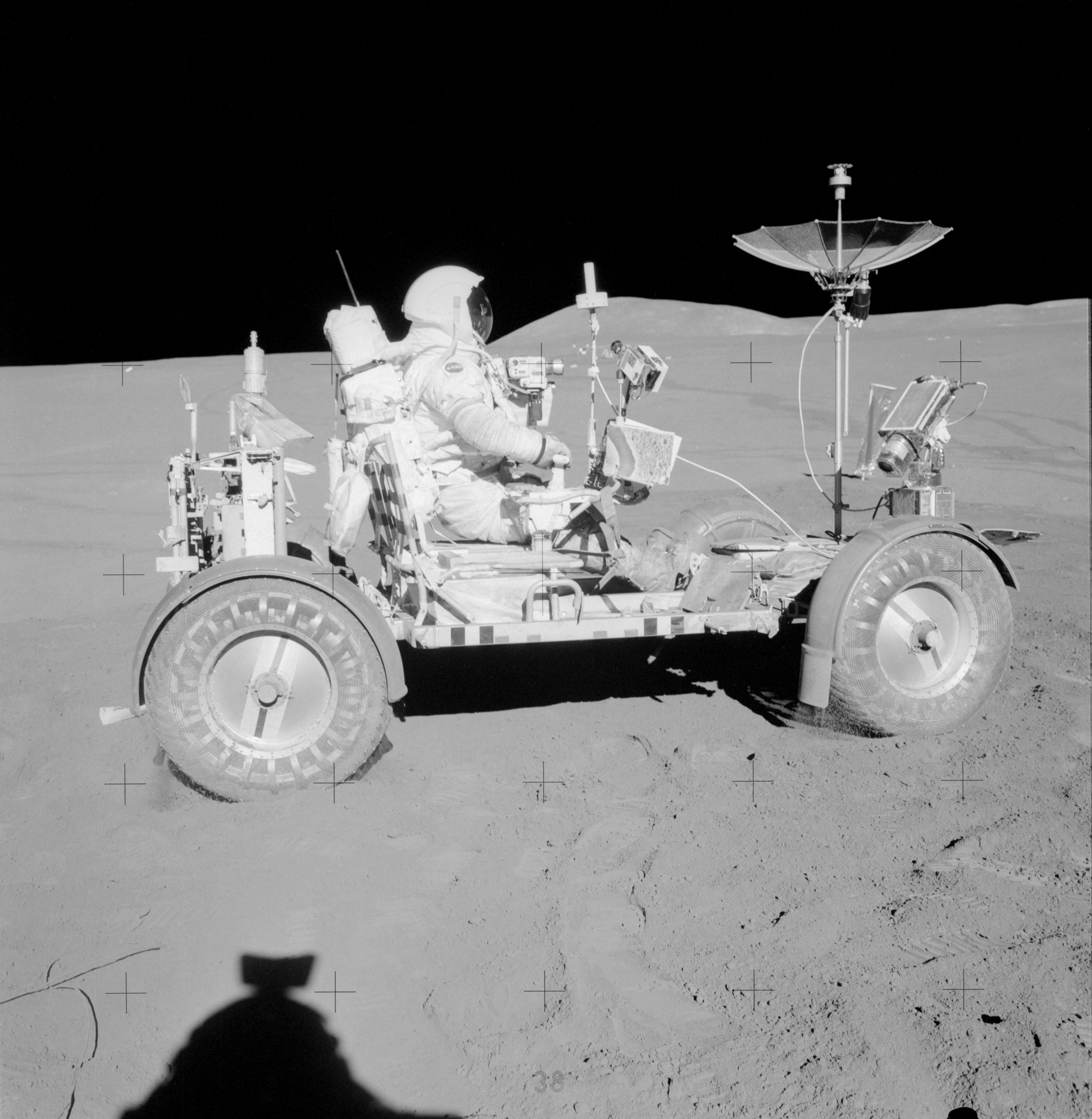
On the way to the Hadley Rille on four wheels
On the following day, on July 31st at 2:12 p.m. CET, commander David Scott stepped on the lunar surface, followed by James Irwin. The two astronauts started testing the new “Moon rover”. The fact that at first only the two rear wheels were steerable, did not put an end to their mission. Slowly, they drove about one kilometre, which was quite an adventure considering the Moon has only one sixth of the Earth’s gravitational force! Finally, they arrived at the edge of the Hadley Rille. They went on to the Hadley Delta, which is located another two kilometres away. Here, Scott and Irwin were able to collect important rock samples from the edge of the Imbrium Basin.
“Genesis Rock”
The geological yield was even bigger the next day: Four kilometres south of the “Falcon’s” landing site, Scott and Irwin discovered a white rock that turned out to be a piece of the original moon crust. It did not take them long to come up with the name “Genesis Rock”. Further rock samples were collected and a number of pictures taken. The third excursion back at the edge of the Hadley Rille included many more important findings and observations.
Back to Earth
Scott and Irwin spent about two days and 20 hours on the lunar surface. On August 2nd, 1971, they eventually left behind the “Moon rover” and prepared for their journey back to Earth. The astronauts’ baggage included 76.7 kilogrammes of samples. Meanwhile, Alfred Worden, who had stayed behind in the command module, had used his time to take pictures of the lunar surface from the lunar orbit with a special camera system installed on the outside of the service module. In order to bring the film magazine with the valuable photographic material from outside of the module into the command module, Worden left the command module for 39 minutes on August 5th during the return to Earth and thereby completed the first Deep Space EVA about 320,000 kilometres away from Earth – shortly after leaving the lunar orbit.
On August 7th, 1971, Apollo 15 landed on the Pacific Ocean. A scientifically profitable and innovative space mission came to an end. Especially for geologists, the samples provided comprehensive information on the age and the quality of the lunar rocks.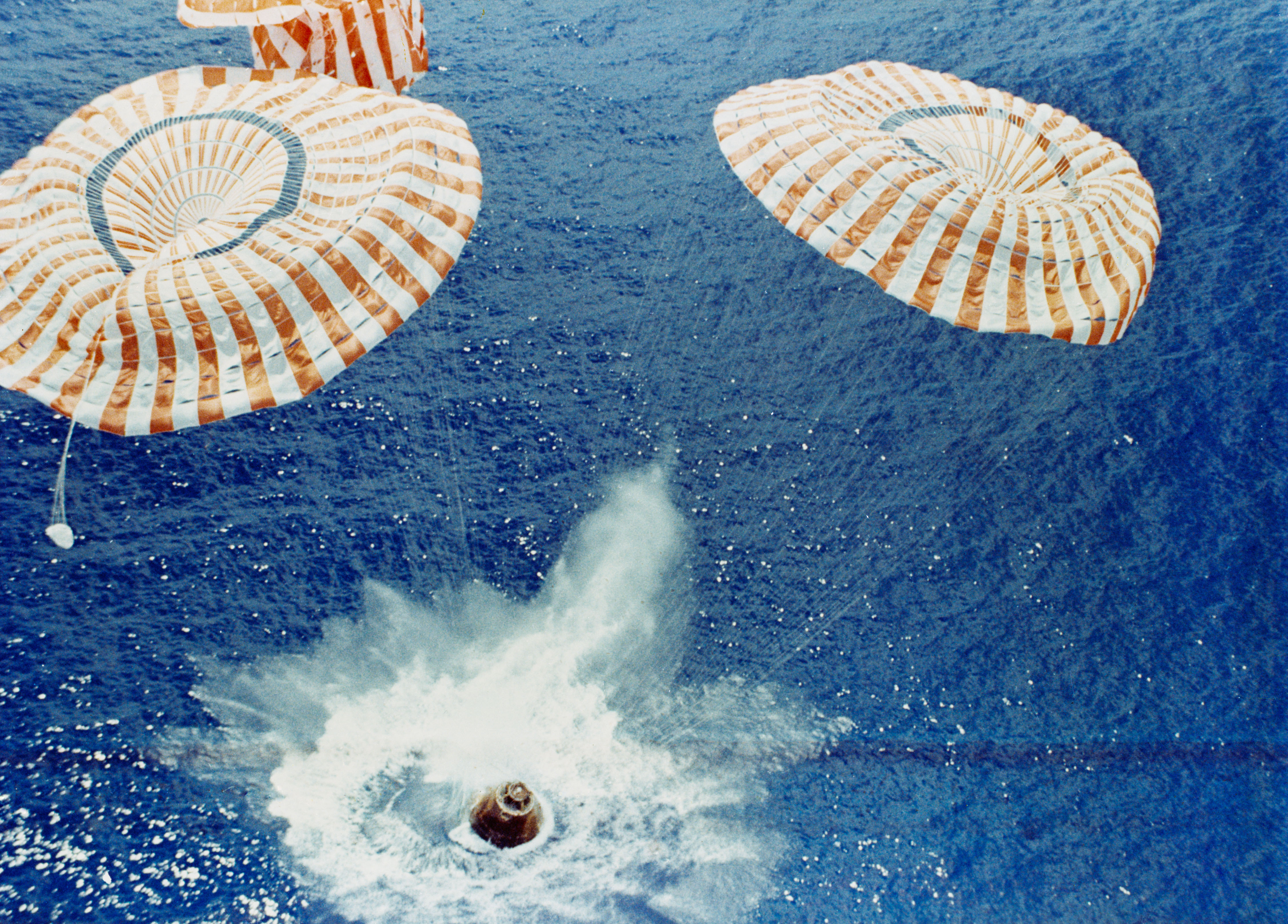
Exhibits at our museum:
At Technik Museum Speyer, several impressive exhibits commemorate the Apollo 15 mission. Europe’s biggest exhibition on crewed spaceflight “Apollo and Beyond” showcases a 1:1 copy of the Lunar Roving Vehicle “Moon rover” on a replica of the lunar surface in the exhibition area “The Moon”. After Apollo 15, the “Moon rover” was also used in Apollo 16 and 17. The unchallenged highlight of this exhibition area is the 3.34-billion-year-old moonstone, that David Scott and James Irwin collected from a Basalt rock at the Dune crater during their second excursion of the Apollo 15 mission. In 2013, NASA gave it to the museum as a permanent exhibit.
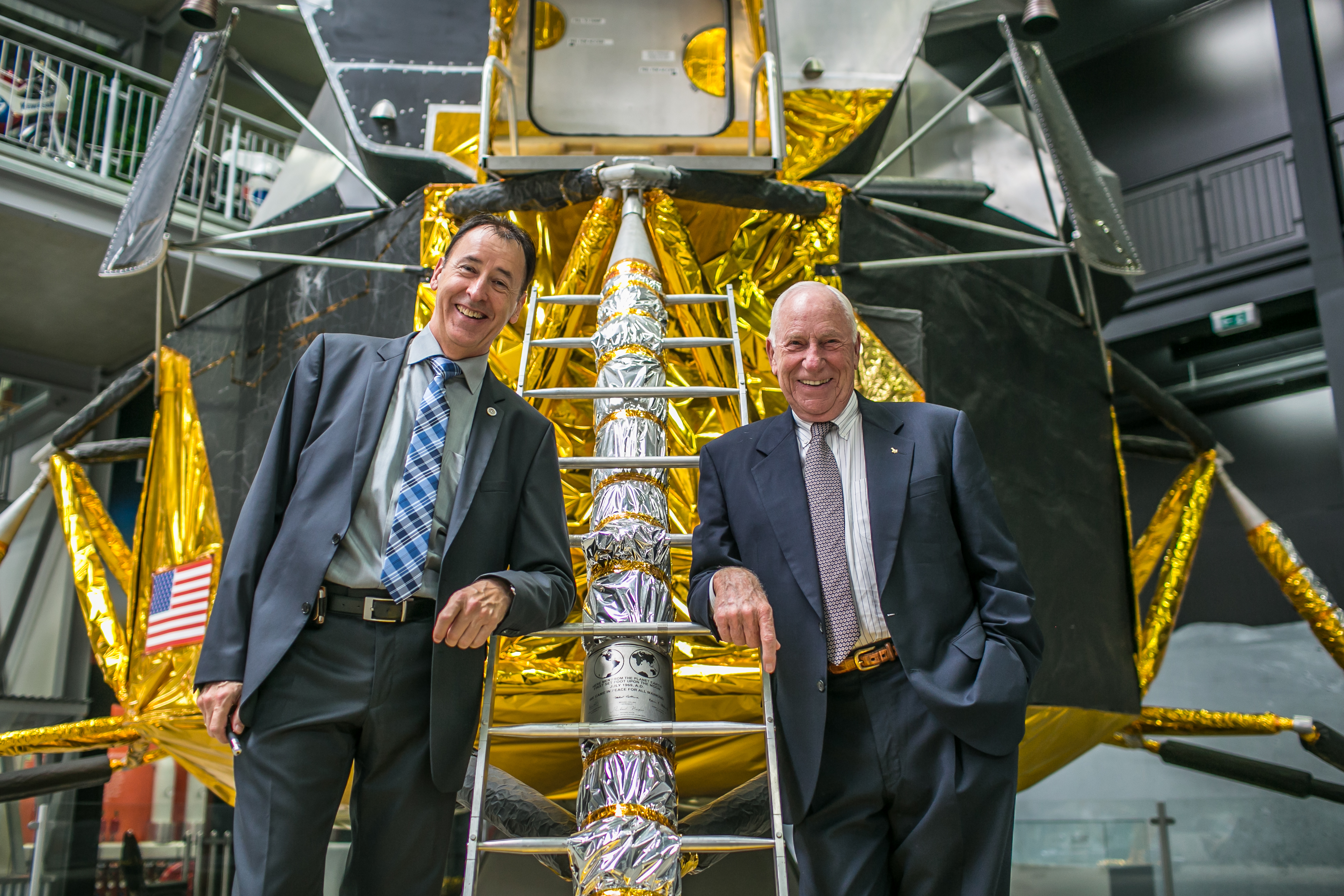
The stories and reports represent the opinions and perspectives of the respective authors. Please note, especially while reading articles about our events, that binding information (e.g. opening hours, admission fees and programme) is only published on the museum's official website www.technik-museum.de.
Please note that the pictures, texts and videos published here are subject to the copyright of the respective authors and / or the museum and may not be used without permission.
Keep up-to-date with new articles
We recommend to subscribe to the museum’s newsletter via e-mail. At the end of each newsletter, we inform you about new articles so that you will not miss any of them. Alternatively, you can subscribe to an RSS feed:
Subscribe to newsletter RSS-Feed (Reader required)

